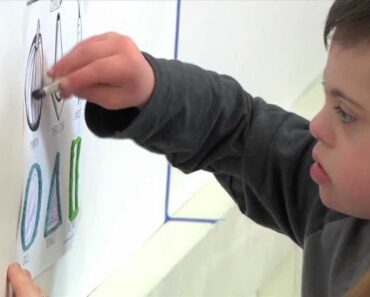In the vast solar system, our planet Earth is located third from the Sun. Considering its place in the universe, it may seem nothing more than a speck, but it supports such an astounding variety of life forms that makes it distinct from all other planets.
The Earth is believed to have come into existence 4.5 billion years ago (1). About 70% of its surface is covered with water, and it is the only known planet to support life. The Earth also has mountains, rivers, canyons, valleys, plains, and some breathtakingly beautiful landforms. The more you study about this wonderful planet, the less you seem to know. Here are some amazing Earth facts for kids to better understand this planet.
Information About The Earth For Kids
All the planets in our solar system, except Earth, are named after either a Greek or a Roman god. There are many assumptions behind the origin of the name Earth. One is that it could be a combination of old English and German words ‘eor(th)e’ or ‘ertha’ and ‘erde’ respectively, meaning ‘ground.’ This name is believed to be around 1,000 years old (2).
In the olden days, astronomers belived that the Earth was at the center of the universe and that the Sun, the Moon, and other planets revolved around it. Until the 1500s, it was also believed that the Earth was stationary and never moved. It was the Polish mathematician and astronomer Nicolaus Copernicus who made the heliocentric model of the solar system with the Sun at the center and the Earth and other planets revolving around it (3).
Scientists believe that the Earth took form when its gravity started attracting dust and swirling gas. The Earth revolves around the Sun every 23.9 hours and completes encircling the Sun in 365.23 days. The Earth’s axis is tilted 23.4 degrees. This tilt is the reason behind the different seasons we experience in a year.
Surface And Structure Of The Earth
A terrestrial planet, the Earth comprises several layers. The uppermost rocky layer is known as its crust, followed by the mantle, the outer core, and the inner core (4). Each of the layers exhibits different chemical composition and physical state.
The composition of the outer crust is as follows (5):
- Oxygen 46%
- Silicon 27.7%
- Aluminum 8.1%
- Iron 5%
- Calcium 3.6%
Meanwhile, the central core of the Earth constitutes iron and nickel.
Radius, Volume, And Mass Of Earth
According to NASA,
- the Earth’s radius measures around 3,959 miles (6,371km), while its diameter is approximately 6.73 x 1011 cubic miles (1.083 x 1012km3).
- the Earth’s surface area measures 1.97 x 108 square miles (5.1 x 108km2) with a volume of 6.73 x 1011 cubic miles (1.083 x 1012km3).
- the Earth’s mass is 6.6 sextillion tons (5.9722 x 1024kg) (6).
50 Earth Facts For kids
- The solar system consisting of the Sun, planets, including the Earth, moons, and other celestial bodies, is situated in what is known as the Milky Way.
- The distance between the Sun and the Earth is around 93 million miles (150 million kilometers).
- With an average density of around 5.52 grams per cubic centimeter, Earth is the densest planet in the solar system (7).
- The Earth has a geoid shape, which means it is not actually a perfect sphere. It bulges towards the Equator, and it is the rotation of the Earth that causes the bulge.
- It does not take the Earth 24 hours to complete a rotation on its axis. The rotation is completed in precisely 23 hours, 56 minutes, and four seconds.
- A year on Earth is not completed in exactly 365 days but 365.2564 days. The extra .2564 is the reason behind leap years. The extra day in February every four years makes it divisible by 4, that is, 2004, 2008, and so on.
- The Earth has only 3% freshwater, while 97% is salty water. Of the total freshwater, over 2% is frozen in ice sheets and glaciers.
- Every winter, the Earth sees around one septillion snow crystals drop from the sky.
- Asia takes up only 30% of the total Earth land area but holds 60% of the world’s population.
- The Moon is the only natural satellite of the Earth.
- Along with the Moon, the Earth has two additional asteroids named 3753 Cruithne and 2002 AA29 locked into co-orbital orbits with it.
- Also known as the Earth’s second moon, 3753 Cruithne is only five kilometers across and follows an orbit similar to that of the Earth, around the Sun.
- Mount Everest stands at 29,028 feet above sea level, making it the highest mountain on Earth.
- The National Oceanic and Atmospheric Administration (NOAA) indicates that Mount Chimborazo in Ecuador is the highest point from the Earth’s center, as it is 6,800 feet farther into space compared to Mount Everest. This is because of its proximity to the equator, where the Earth’s bulge is the greatest.
- NOAA identifies Challenger Deep in the Mariana Trench in the western Pacific Ocean as the deepest point on Earth. It is as deep as 36,200ft below sea level.
- Mercury, Venus, Earth, and Mars are the four terrestrial planets in the Solar System. It means these are the only planets with a rocky surface.
- Earth is the fifth-largest planet in the Solar System and the largest one amongst the terrestrial planets.
- The Moon also witnesses ‘moonquakes’ similar to ‘earthquakes.’ However, the frequency and intensity of moonquakes are a lot less compared to earthquakes.
- Lut Desert in Iran is the ‘hottest spot’ on Earth. It recorded the highest surface temperature of 70.7°C in 2005 (8).
- Antarctica is the coldest place on Earth. The temperature in the continent can drop below -100 degrees F (minus 73 degrees C).
- Antarctica holds 70% of the freshwater on Earth.
- Antarctica is considered a desert because its inner regions receive only two inches (50 millimeters) of precipitation a year.
- The Hudson Bay of Canada exhibits lower gravity than other areas on Earth.
- The Pacific Ocean is so huge that all the continents of the world could fit into it (9).
- The Earth’s surface spins at around 1,000 miles per hour at the Equator.
- It is believed that, at one point in time, the Earth had two moons. The second moon must have likely collided with the existing moon, resulting in its decimation. This is also regarded as the possible reason why the two sides of the Moon differ in appearance.
- The Great Barrier Reef off the coast of Queensland, Australia, is the largest living underwater structure on Earth. It is so prominent that some parts of it are visible even from space.
- The Dead Sea is located at the lowest point on Earth. The surface and shores of the salty lake are located 1,388ft (423m) below sea level.
- Lake Nyos and Lake Monoun in Cameroon and Lake Kivu in the Democratic Republic of Congo and Rwanda are three deadly lakes located above inactive volcanoes. The hot magma running below the surface releases carbon dioxide into the lakes. This carbon dioxide forms a thick layer over the lakebed. If released in an explosion, it can suffocate any person around it.
- Due to global warming, the Earth is gradually losing its source of freshwater, and the global seawater levels are rising.
- In ancient times, the Earth was believed to be flat. However, the Greek philosopher Plato correctly indicated that the Earth was indeed a sphere.
- The inner core of the Earth is extremely hot, almost as hot as the surface of the Sun.
- When the oceanic plates come in contact with the continental plates, they are pushed downwards. This movement causes friction and pressure, which then causes molten rocks to move upward to the crust and erupt as ash and lava.
- The Earth’s atmosphere is a layer of gases. Since it is not in solid form, it fades away as it advances higher.
- By volume, the atmosphere comprises 78% nitrogen, 21% oxygen, 1% argon, and a mixture of other gases. The water vapor in the atmosphere is present below a height of about 8–15km (4.9–9mi).
- Earth has fewer craters compared to the other planets because it has volcanoes and witnesses earthquakes. These two natural phenomena affect the uneven surface of the Earth.
- One kilogram of Earth’s seawater can contain an average of around 35 grams of salt.
- If seven billion people on Earth jumped simultaneously, it could cause a 4 to 8 magnitude earthquake.
- Up to 1.3 million Earths can easily fit inside the Sun.
- The first images of Earth from space were captured by a motion picture camera installed in a German V-2 rocket on October 24, 1946.
- It takes eight minutes for the Sun’s rays to reach Earth.
- The planet Mars is half the size of the Earth.
- Neptune and Uranus are four times the size of the Earth.
- Planet Saturn’s diameter is 9.5 times that of the Earth’s diameter, while Jupiter’s is 11 times that of the Earth’s diameter.
- The Earth’s atmosphere can break meteoroids that advance toward the planet, thus protecting the surface from the final impact.
- Earth’s natural satellite, the Moon, is the fifth largest moon in the Solar System.
- The Moon’s structure is similar to that of the Earth’s with a crust followed by a mantle, an outer core, and a solid iron inner core.
- The Moon is locked tidally to Earth, and hence, we can only see one side of its surface from the Earth. It causes tides and can also cause other climatic changes on Earth.
- Around 300 million years ago, the Earth had only one gigantic supercontinent called ‘Pangaea.’ The entire remaining water body was known as ‘Panthalassa.’
- Humans are yet to map around 80% of Earth’s oceans. This means that 65% of the Earth remains unexplored.
Even after substantial advancements in science, we still have a lot to learn about this utterly fascinating and beautiful planet. Despite all our efforts, we will always be mystified by numerous unanswered questions. Every day, something new is discovered about Earth and the history of the life forms it has supported. Hopefully, someday, we will have most of our questions related to the Earth answered.
References:
Recommended Articles

































